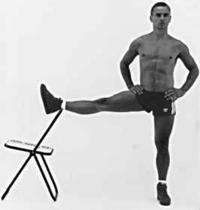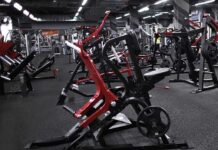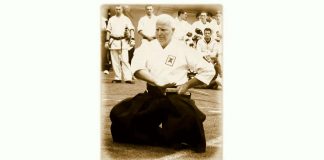Misconceptions on Stretching and Flexibility and the Method of Testing Your Potential to Do a Side Split
This is the first installment of my column on training that appeared in March 1999 issue of TaeKwonDo Times.
My area of expertise is conditioning for sports and martial arts, but I am most known by martial artists as the author of the book Stretching Scientifically: A Guide to Flexibility Training and of video Secrets of Stretching.
Even though this column is titled “Stretch Yourself” it will deal with nearly all aspects of physical training as all of them are interrelated and should not be considered separately.
I will provide readers with information they can put immediately to use and experience its benefits, often right away too. In the course of providing this information I will dispel some harmful yet persistent misconceptions on exercise and training methods. Here are some of these misconceptions.
That most people can’t do splits because of structure of their joints and length of their ligaments
- That it takes long time to achieve great flexibility
- That strength training limits flexibility and speed
- That static stretches, such as attempts at doing splits, are to be done during a warm-up to improve range of motion and prevent injuries
- That stretching prevents injuries
There are other misconceptions and I will address them as they come up in discussing specific issues and answering readers questions.
In this issue I will address the first misconception: That most people are kept from doing splits by structure of their hip joints and length of the hip joint ligaments.
There are simple tests that show you that for the great majority of people the structure of joints and the length of ligaments are not the obstacle for doing splits. You can use these test to determine if you have the potential to do front and side splits before you start your stretching program. (Yes, there are people who cannot do side splits because of hip joint deformity called coxa vara.)
Here is the side split test: Stand beside a chair or table and put your leg on it as shown below. Make sure that both your hips and your raised leg are all in one line. Repeat this test with your other leg.

If you think that the length of your muscles and structure of your hips will not let you do side splits, try this test… The leg resting on the chair is in the position it would have in a split
Now, what have you done? You have done “half side splits” with both your legs!
You have proved to yourself that both your hip joints have all the mobility (range of motion) needed for a full side split!
You have also proved that the muscles of each of your legs are already long enough for a side split. You know that no muscle or ligament runs from one inner thigh to the other (or, if you don’t know it, you can ask your doctor). So, what keeps you from doing the whole side split with both legs spread sideways at the same time? Your nervous system, that’s what!
I will not bore you here with explaining how that happens. The important thing is that with the right stretching method you will teach your nervous system to let you do side splits any time, without any warm-up.
The right method works with your nervous system and lets you do splits within months, sometimes even weeks. Other ways of stretching take more time and bring worse results because they work against your nervous system.
I stress a method as opposed to mere stretches. You may know many stretches but it is not stretches alone that make the difference in flexibility. What does make a difference is when and which stretch or exercise you do during your workout.
Many adults, who can perform the side split test with ease, have a great deal of difficulty with side or straddle splits (but not necessarily with front splits) due to a problem in the outer part of their hips. They feel that there is a “stop,” accompanied by pain in the outside hip or upper thigh region that prevents them from opening their legs wide enough to do a full side split. In the next issue I will tell you what to do about it.
To read the next installment of this column click here.
This article is based on the book Stretching Scientifically.
This article is copyrighted © [March 1999] by Stadion Publishing Company, Inc. and posted with their permission. Original articles of Thomas Kurz’s column on stretching and training are at https://www.stadion.com/articles-on-training-for-sports-and-martial-arts/







